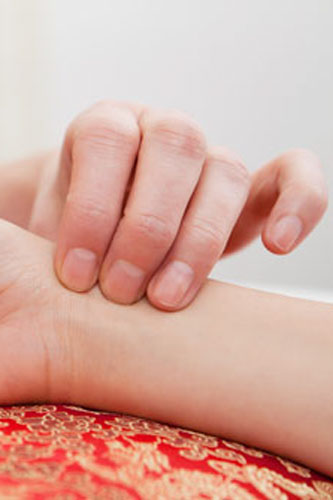Pulses and Impulses by Graham Townsend and Ysha De Donna is oriented around Chinese pulse indications but is translatable by most advanced Western practitioners to some extent though decidedly more for the Chinese practitioner than the tongue book.
It associates pulses with corresponding positive and negative conditions and emotions, something that has not been done before in a pulse diagnosis book. The part that has the most universal value to all herbalists, and for me, are the first 95 pages.
The descriptions are such that with a little practice, one can actually transcribe them for the patients. For instance the “knotted pulse” is slow and has occasionally irregularly missed beats of short duration. In other words, if you don’t pay close enough attention, you may not notice an occasional slightly missed beat. Slow means that it is less than 60 BPM but they also talk about how pulses were determined without a second hand watch, by counting the number of breaths per respiration. Four or five beats are considered normal during the space of one complete respiration (inhalation and exhalation), assuming the patient is not nervous, excited, under the influence of stimulants or other factors they mention. If the patient’s breathing is abnormal then the count is according to the doctor’s respiration (a point that was never made clear to me in previous classes or studies).
Pulse and Impulses is Published by Thorsons, an excellent for those who have knowledge of Chinese Diagnostics and theory. I still think we can use a Western pulse diagnosis book. It was definitely part of the art of diagnosis, practiced at a time when clinical diagnostic skills were part of an M.D.s training, probably not more than 50 years ago.
The basic TCM signs of fast, slow, superficial, deep, strong, weak, as well as various types of irregular pulses are easy to learn and should be part of what every skilled Western herbalist is able to accomplish. Where we go off onto the deep end of “if-iness” and intuitive ambiguity is when TCM assigns individual organs to different positions and depth.
The basic overall qualities are an incredibly useful diagnostic skill. This book can help you understand those.

